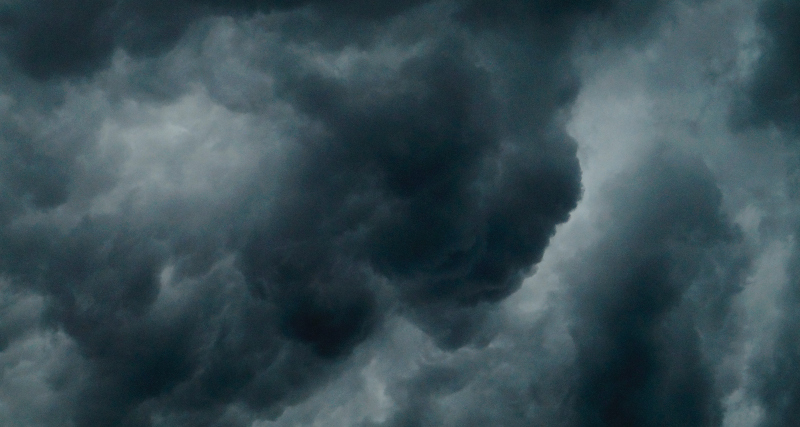
Driving north from Seattle during our latest downpour, low clouds hiding the treetops, I recalled Native stories about the rain and the long, cloudy season. One that came to mind was the story told by Chief William Shelton of the Snohomish people about a time when the sky was much lower than it is now.
Do’qwibaƚ (DO-qwee-bahl), “The Changer,” the mythic demiurge traveling from the sunrise and giving the world its shape, reached Puget Sound and decided he had done enough. Languages left to be distributed he simply threw out. As a result, people on Puget Sound spoke many languages and had a difficult time understanding one another.
The Changer also left the sky so low that people kept hitting their heads against it. Unhappy about what he had left undone, the people decided to lift the sky with sticks. They agreed to do so simultaneously at the command Ya-ho, “Lift together!” The first time they lifted it a little. The second time, higher still, and the third time to where people could walk safely underneath.
A friend of mine who grew up in Longview where storms barrel directly in from the Pacific said that long stretches of low cloud cover were oppressive. And then came the rain. Native people called a heavy mist prior to a general rain HLUH-chub. A light sprinkle was HLUHL-chub; rain was qulb, a word duplicated to signify heavy rain: qulb qulb. Native thoughts about local weather are found in their myths, and they are gloomy. One begins simply: “It was raining.” Another: “Rain began. Water covered the whole country…Muskrat was on a stick, very sad.”
In one myth Muskrat builds a raft, dives to collect mud from the primal sea and heaps it on the sticks, creating land for a world before this one. In it, hunters seeking refuge under trees during rainstorms have their hearts eaten by ghouls slithering down branches — or lose their souls to dripping shadow thieves.
Another myth about Duwamish River weather describes how Rain Wind, the autumn rain, married icy Northwind’s daughter and moved to her village. But its peoples killed him, and North Wind exiled Rain Wind’s mother to a hilltop hut south of Seattle and froze the world. Rain Wind’s son by Northwind’s daughter grew up unaware in the village and, while exploring, discovered his grandmother in the hut filled with her woven baskets. She told him about his ancestry and his real name: Storm Wind–the “Wind that tears up the trees,” the warm Chinook Wind, later known as springtime’s Pineapple Express.
To avenge his father, Storm Wind roared into North Wind’s village, melting ice as his grandmother brought the rain, shaking mist from tightly woven baskets, rain from burden baskets, and torrents from open-weave baskets. The flood drove out North Wind, but because he was family he visits every winter. A rocky rapids–remains of North Wind’s ice fish weir–survive in a Georgetown park, dramatized with artwork created by Elwha S’Klallam artist Roger Fernandes.
Traditionally young boys swung bull-roarers mimicking the sound of Storm Wind to hurry spring freshets, and women washed the rocky face of the Grandmother’s hill so she could manifest her power to bring rain. One might wonder why anyone would wish more rain in damp, dark Seattle, but spring floods signal salmon to return to spawning rivers where people caught them.
From November to March, awful weather forced people to stay indoors, and these myths were recited at the solstice. Then as now winter rains brought disaster and death, and the many families cooped up in a longhouse during the cold, omnipresent drizzle told stories about feeling “devoured by the house.” The late Suzie Sampson Peter, an upper Skagit historian, told a story about Lady Louse who cleaned her big house, sweeping all the refuse from the corners to the center where, lonely and depressed, she became lost—and disappeared.
Global warming promises local climate change. Some of us hope for something akin to sunny, warm San Diego, but the likelihood is that we will just get more and heavier rain. Now, as then, myth serves to describe what we must confront in the wide world and in ourselves.

Every day, while I bus around the city, the endless intricate variation of our skies captures me again. From Aurora or I-5 , the views to east and west are monocrome and pastel abstracts evocative as the surface of Jupiter.